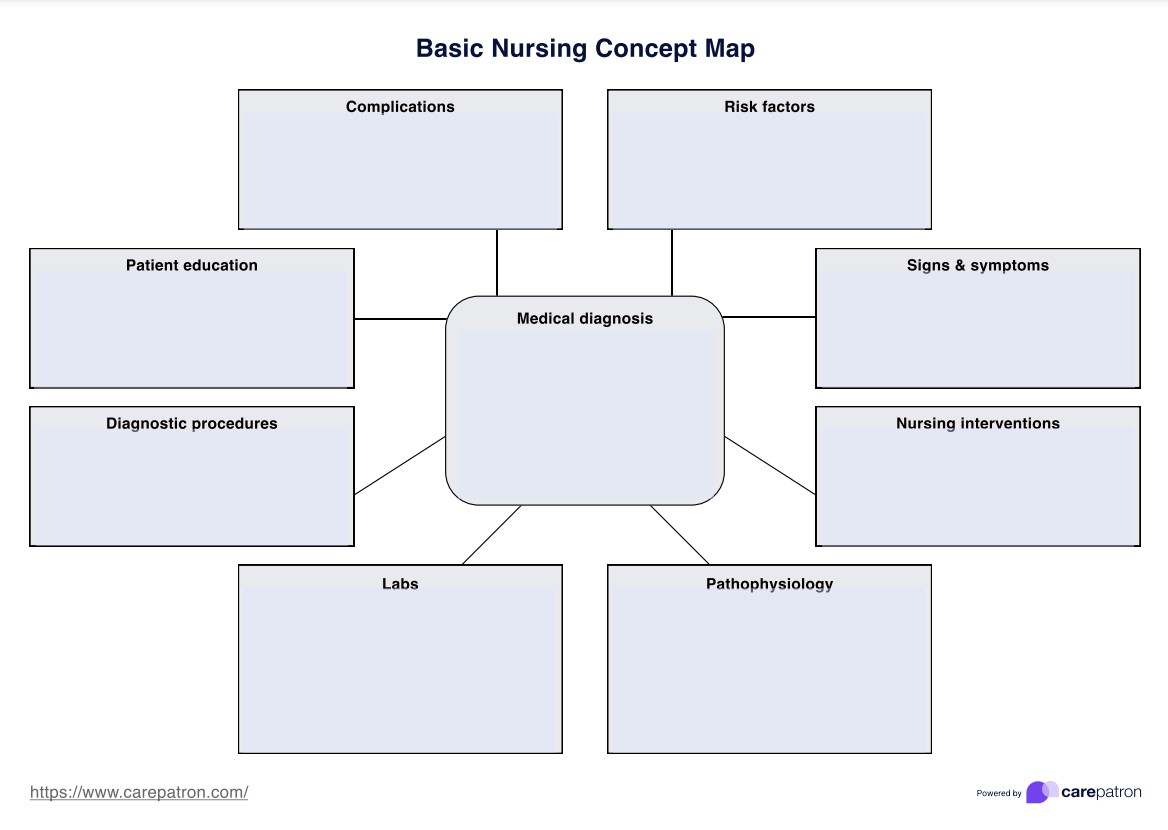To create a comprehensive nursing concept map, use the scaffolding provided by Carepatron and insert terms or concepts to build links and forms on specific topics and concepts.

Concept Map Nursing Template
Learn about the benefits of this adaptable learning tool and excel in your nursing practice and learning!
Concept Map Nursing Template Template
Commonly asked questions
These valuable templates can be used at any point by nurses and nursing education students to elaborate on a specific topic and create reviews for testing or exams. This tool may also be an educational resource for showing patients the connections and relationships between their health concerns.
These Nursing Concept Map Templates are an educational tool for efficient and confident healthcare concept learning. They are designed to be customized, and their success lies in the user's ability to draw on their knowledge and connections.
EHR and practice management software
Get started for free
*No credit card required
Free
$0/usd
Unlimited clients
Telehealth
1GB of storage
Client portal text
Automated billing and online payments











